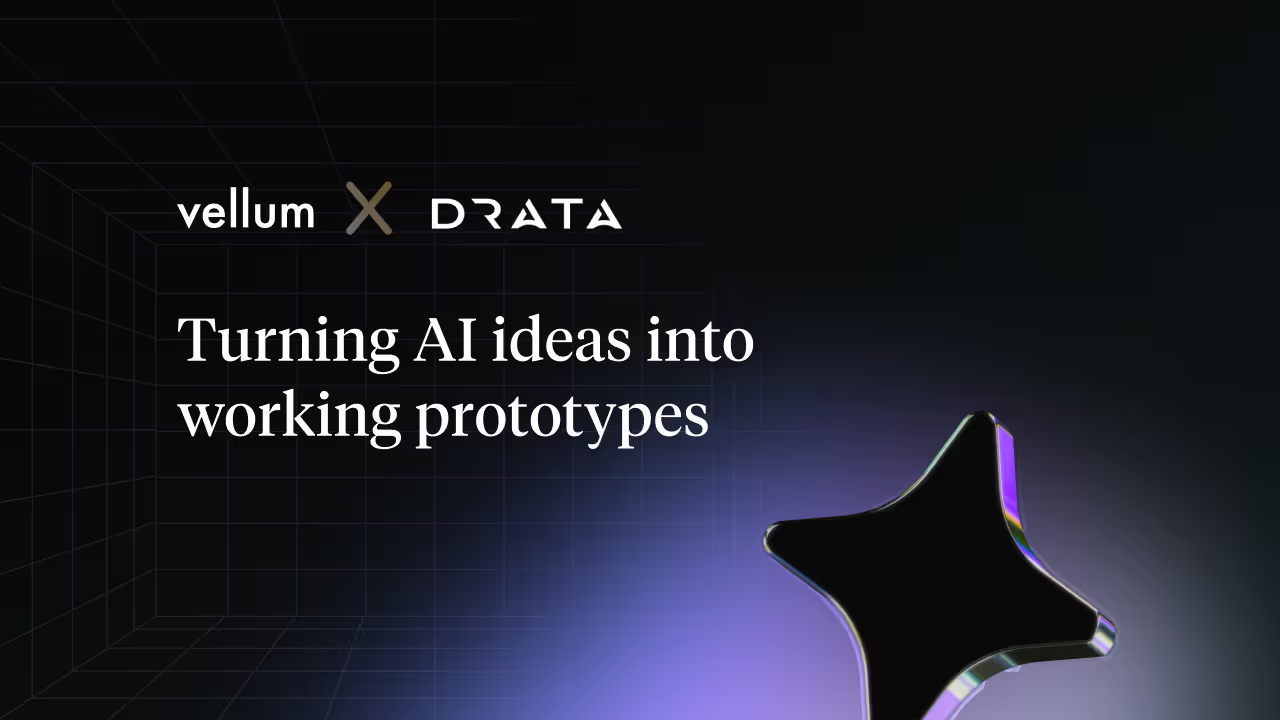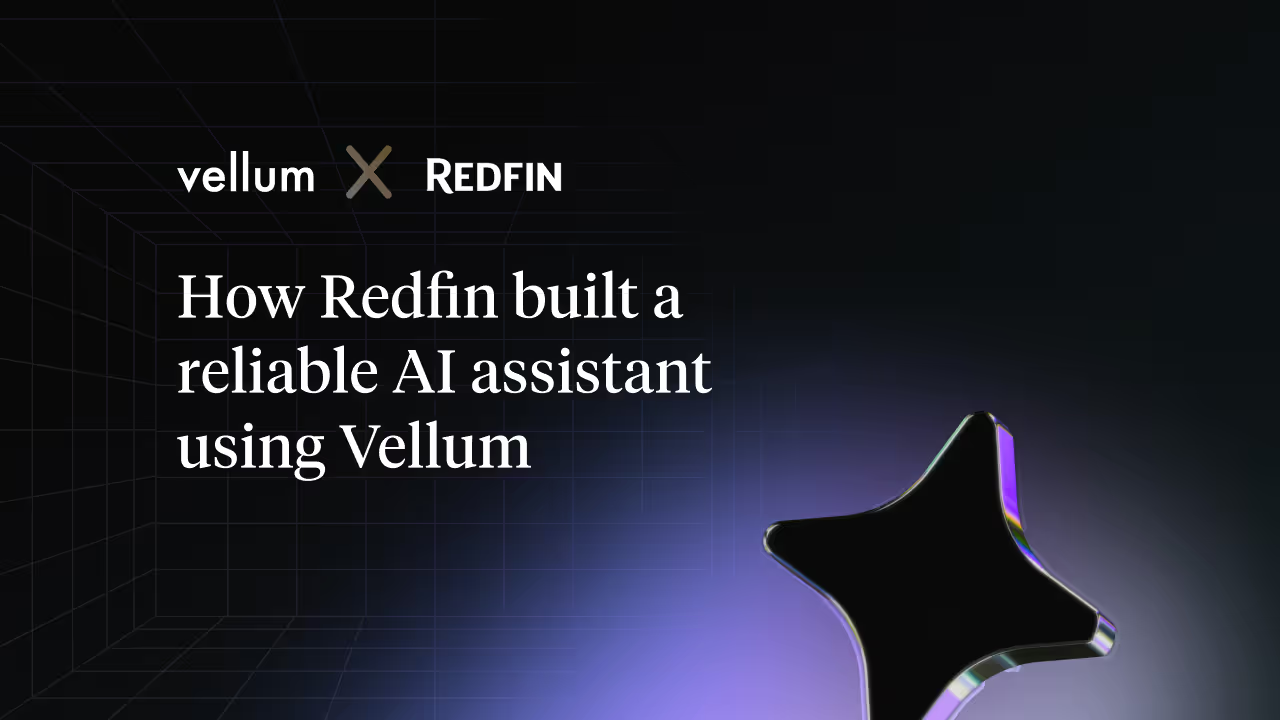What healthcare teams build with Vellum
Use-cases

What healthcare teams build with Vellum
Use-cases

What healthcare teams build with Vellum
Use-cases

What healthcare teams build with Vellum
Use-cases

What healthcare teams build with Vellum
Use-cases

Transformation example
Insurance Claims AI Transformation Journey




Defines claims processing logic, fraud detection criteria, and business rules through Vellum's visual interface. Can approve pilots up to $75K; requires CFO approval for large initiatives. Must demonstrate ROI in 24 months and maintain regulatory compliance.
Builds production infrastructure, integrations, and ensures enterprise-grade reliability and compliance. Can architect solutions but requires InfoSec, Compliance, and MRM sign-off. Must maintain 99.9% uptime and complete audit trail compliance.
Transformation example
AI Medical Chatbot: Patient Intake




Designs intake logic and ensures clinical safety. Defines escalation paths (emergency vs non-emergency) and validates AI prototypes against compliance standards. Requires ongoing consultation with hospital ethics committee and medical staff leadership.
Builds integrations into EMR systems and ensures secure data handling. Implements production-grade infrastructure for patient data. Must maintain audit logging, uptime, and strict regulatory compliance (HIPAA, SOC-2).
What healthcare teams build with Vellum
Transformation example
Vellum for Supply Chain: Crisis-Driven AI Transformation Journey



Primary personas

Oversees sourcing strategy and supplier stability. Approves solutions up to $250K with council review and sets standards for risk detection updates. Must balance early warning adoption and maintaining supplier relationships.
Architects AI solutions with 10+ years in enterprise systems and 4+ years in supply chain. Designs workflows within SAP while ensuring audit compliance. Requires approvals from InfoSec, Legal, and Compliance before deployment.
Critical Stakeholders with Veto Power
Executive sponsor with quarterly board reporting
Final validation on risk methodology and escalation
Data governance and system integration approval
Regulatory requirements and supplier communication protocols
Domain expert who lived through Zentech crisis.
What healthcare teams build with Vellum
Transformation example
Vellum for Retail: Pricing AI Transformation Journey



Primary personas

Primary business champion with 15+ years pricing expertise. Defines pricing logic and competitive response rules through Vellum's visual interface.
Technical architect building production infrastructure and integrations. Ensures enterprise-grade reliability and compliance.
Supporting team
What healthcare teams build with Vellum
Transformation example
Vellum for Governments: Building Sovereign AI Integrity



Primary stakeholders

Appointed to coordinate national AI policy, innovation, and oversight. Establishes standards, manages risks, and ensures AI adoption aligns with sovereign priorities.
Holds statutory responsibility for information systems and digital infrastructure. Ensures AI is securely integrated, interoperable across agencies, and resilient against cyber and operational risks.
Supporting team
What healthcare teams build with Vellum
Compliance and risk foundation
Internal governance before operational deployment
- Lisa Chen, Claims Director: Defines a conservative pilot for personal auto claims in Texas, targeting 8–12% efficiency gains and securing $65K approval with clear success criteria.
- David Rodriguez, AI Engineering Lead: Builds the compliance-ready foundation using Vellum’s audit trails, monitoring, governance, and data lineage to cut prep time in half and ensure traceability.
- Maria Santos (Model Risk Management): Uses Vellum’s evaluation, bias testing, and execution tracking to validate models, set performance baselines, and document MRM compliance.
- James Wong (Chief Risk Officer): Approves a conservative pilot scope with human-in-the-loop validation, weekly performance monitoring, and clear exit thresholds to manage risk.
- Patricia Kim, Information Security Lead: Oversees claims system integration with Duck Creek, implements encryption and access controls, and leverages Vellum’s built-in security architecture to cut custom security work and meet a 6-month integration timeline.
- Robert Chen, Compliance Officer: Focuses on audit readiness by using Vellum’s audit trails, traceability, and documentation standards to prepare for regulatory examinations and ensure transparent customer communication.
Conservatively scoped, compliance-ready pilot with MRM validation, CRO risk controls, secure system integration, and full audit documentation.
Controlled pilot with strict oversight
Risk and use-case validation with measured learning
- Controlled rollout: Gradual AI adoption with human override, moving from full manual decisions to limited autonomy on low-value claims.
- Performance gains: By month 24, processing time drops 15%, fraud detection improves 6%, and cost per claim falls 10%.
- Change management impact: Adjuster satisfaction rises from 48% to 65% with structured adoption and oversight.
- Compliance assurance: Zero AI-related complaints, full audit trails, and bias testing show fairness and transparency.
- Quality maintained: Error rate steady at 2.3% and customer satisfaction sustained at 71%.
6,200 claims processed with $89K annual savings, reflecting a 14% cost improvement. Error rate steady at 2.3% and customer satisfaction sustained at 71%.
Geographic Scaling
Careful scaling with state-by-state adaptation
- Expanded to property claims under $15K with 70% workflow reusability and adaptation to regional fraud patterns, reaching 14,000 AI-assisted claims annually by Month 42.
- Processing time cut to 8.2 days, fraud detection improved to 76%, and annual savings increased to $285K.
- 6–9 months of adaptation for state regulations, fraud patterns, and local adjuster training, with Vellum’s governance framework supporting compliance and customization.
- Different legacy system setup, API limitations, and regional performance issues require targeted engineering and optimization.
Multi-state AI claims system delivering faster processing, higher fraud detection, and $285K annual savings in Texas, while adapting workflows and integrations for Florida expansion.
Market Leadership
Competitive differentiation through accumulated intelligence
- Predictive severity modeling, subrogation detection, seasonal damage protocols, and vendor analytics become part of the workflow after 4+ years of Vellum use.
- Publish benchmark reports and whitepapers based on 95,000+ processed claims
- Collaborate with insurers, healthcare providers, and technology vendors on AI standards
Market-leading claims AI program that delivers faster processing, higher fraud accuracy, lower costs, and industry recognition.
Compliance and risk foundation
Internal governance before operational deployment
- Dr. Sarah Patel, Clinical Director: Defines a conservative pilot for intake queries in California, targeting 8–12% intake efficiency gains and securing $60K approval with clear success criteria.
- Mark Alvarez, AI Engineering Lead: Builds the compliance-ready foundation using Vellum’s audit trails, monitoring, governance, and data lineage to cut prep time in half and ensure HIPAA traceability.
- Maria Lopez, Model Risk Manager: Uses Vellum’s evaluation, bias testing, and execution tracking to validate intake models, set performance baselines, and document MRM compliance.
- James Wong, Chief Risk Officer: Approves a conservative pilot scope with human-in-the-loop validation, weekly performance monitoring, and clear exit thresholds to manage patient safety risk.
- Patricia Kim, Information Security Lead: Oversees integration with the provider directory and EHR, implements encryption and access controls, and leverages Vellum’s security architecture to cut custom security work and meet a 6-month integration timeline.
- Robert Chen, Compliance Officer: Focuses on HIPAA readiness by using Vellum’s audit trails, traceability, and documentation standards to prepare for regulatory examinations and ensure transparent patient communication.
Compliance-ready pilot with MRM validation, CRO risk controls, HIPAA-secure integration, and full audit documentation. Implementation included 6-month physician training program, ongoing clinical advisory board oversight, and quarterly compliance audits with healthcare legal counsel.
Controlled pilot with strict oversight
Risk and use-case validation with measured learning
- Controlled rollout: Gradual chatbot adoption with clinician override, moving from manual triage to limited autonomy for low-risk intake queries.
- Performance gains: By month 24, intake time drops 15%, misclassification rate improves 7%, and admin cost per intake falls 12%.
- Change management impact: Clinician satisfaction rises from 52% to 68% with structured adoption and oversight.
- Chatbot-related complaints reduced to less than 0.5% of interactions, with all complaints resolved within 24 hours through established escalation protocols.
- Intake accuracy maintained at 96% for routine cases, with complex cases requiring clinical review maintaining separate accuracy metrics.
8,500 patient intakes processed with human oversight for 30% of complex cases, achieving $95K annual savings primarily through administrative efficiency gains rather than clinical workflow changes.
Geographic Scaling
Careful scaling with state-by-state adaptation
- Expanded to mental health and primary care intake with 70% of core technical infrastructure reusable across states, with significant adaptation required for local provider networks, insurance relationships, and regulatory variations.
- Intake processing time cut to 6.8 minutes, classification accuracy improved to 97%, and annual savings increased to $310K.
- 6–9 months of adaptation for local regulations, insurance networks, and provider availability, with governance supporting compliance and customization.
- Different EHR setups and API limitations require targeted engineering and optimization.
Multi-state AI chatbot delivering faster intake, higher accuracy, and $310K annual savings in California, while adapting workflows and integrations for Florida rollout.
Market Leadership
Competitive differentiation through accumulated intelligence
- Predictive care triage, insurance eligibility verification, appointment optimization, and population health analytics become part of the chatbot workflow after 4+ years of Vellum use.
- Collaborate with healthcare research institutions to publish peer-reviewed studies on AI-assisted intake efficiency, following IRB approval and patient consent protocols for any research publications.
- Collaborate with hospitals, insurers, and regulators on AI safety standards.
Market-leading AI medical chatbot program delivering faster patient intake, higher accuracy, lower costs, and recognized as an industry benchmark.
Compliance and risk foundation
Internal governance before operational deployment
- Rachel Thompson, Senior Director of Strategic Sourcing: Defines a conservative pilot with 8 critical electronics suppliers ($45M spend), targeting a 40% reduction in assessment time from the current 35–40 hours while maintaining decision quality. Secures $285K approval with strict success criteria and exit conditions.
- Michael Singh, Lead AI Engineer: Builds foundation architecture using Vellum’s pre-built orchestration and audit trail to cut setup time from 8 to 4 months. Designs monitoring with full workflow transparency, establishes governance documentation, and implements data quality validation as a key differentiator from custom builds.
- Dr. Sarah Kim, Chief Risk Officer: Defines conservative pilot scope limited to electronics suppliers, with 12 months of human validation alongside AI. Leverages Vellum’s evaluation and statistical validation frameworks for risk documentation, monitors performance with built-in analytics, and enforces exit thresholds to protect supplier relationships.
- Jordan Martinez, IT Security Director: Reviews SAP supplier master data integration with a 6-month timeline for production readiness. Uses Vellum’s enterprise-grade security architecture to reduce custom development, implementing encryption and access controls through built-in governance frameworks.
- Lisa Wang, Legal & Compliance Director: Prioritizes audit readiness over regulatory pre-approval, relying on Vellum’s audit trails and decision tracking for compliance preparedness. Defines supplier communication and transparency protocols, and sets documentation standards using the platform’s traceability features.
- Robert Chen, Compliance Officer: Focuses on HIPAA readiness by using Vellum’s audit trails, traceability, and documentation standards to prepare for regulatory examinations and ensure transparent patient communication.
Compliance-ready pilot with CRO-defined risk controls, InfoSec-secure SAP integration, and full audit documentation. Implementation included 12 months of parallel human validation, governance and data quality frameworks, and quarterly reviews with legal and compliance leadership.
Controlled pilot with strict oversight
Conservative validation with measured learning
- Controlled rollout: Gradual AI adoption with human override, shifting from full manual validation to AI-flagged high-risk suppliers while traditional assessments run in parallel for comparison.
- Performance gains: By month 16, workflow refinements move from quarterly to monthly cycles, with conservative success metrics tracked through Vellum’s monitoring and evaluation tools.
- Change management impact: Stakeholders align on updates monthly, with weekly parameter reviews ensuring realistic pace and trust in AI-assisted supplier assessments.
- Historical testing confirmed AI performance against three supplier failures, with the Zentech case showing stress signals 3–4 months before bankruptcy though not all indicators were captured.
- Live monitoring continued across eight suppliers under manual oversight, with results emphasizing the need for human interpretation and supplier relationship context in risk assessments.
By month 16, supplier assessment time dropped from 38 hours to 18–22 hours (42–53% improvement), with detection accuracy ranging 68–74% and a 12% false positive rate under manual review. The pilot covered eight suppliers, documented one case of disruption prevention, and maintained supplier satisfaction through enhanced communication protocols despite initial concerns.
Geographic Scaling
Knowledge transfer with local customization
- Gradual supplier expansion: Additional 8 electronics suppliers (16 total under AI assistance)
- Supplier diversity: Different business models require parameter customization (contract manufacturers vs. component suppliers)
- Volume management: Enhanced monitoring for 16 suppliers representing $78M annual spend
- 6-8 months adaptation time for chemicals category with different risk patterns
- Category-specific requirements: Chemical suppliers have different financial stress indicators and regulatory considerations
- Local business logic: Elena's electronics expertise provides foundation but requires chemistry category manager input
Processing time improved from 18 to 12 hours per assessment (33% gain), with risk detection accuracy reaching 73–78% and false positives stabilizing at 10–14% after adjustments for supplier relationship sensitivity.
Competitive differentiation
Strategic capabilities with realistic advantages
- Portfolio risk modeling: Cross-supplier risk assessment for concentration analysis
- Predictive relationship management: Early warning system for supplier performance degradation
- Market intelligence integration: Industry trend analysis through supplier performance aggregation
- Strategic planning support: Risk-adjusted supplier development investment recommendations
- Industry participation: Rachel speaks at procurement conferences on practical AI implementation
- Knowledge sharing: Contribute to industry supplier risk management best practices (not proprietary technology licensing)
- Operational leadership: Enhanced supplier risk management capabilities recognized by industry peers
- Talent development: Procurement professionals with AI-assisted analysis experience command market premiums
After 48 months, the organization builds institutional intelligence from accumulated supplier data, develops advanced business logic on Vellum’s platform, adapts risk models in weeks instead of months, and gains credibility through responsible AI use in supplier management.
Pre-Vellum foundation
Business case established and technical requirements defined
- Jennifer has mapped 47 manual pricing decision points and 3-5 day competitive response cycles
- Executive sponsorship secured with $800K budget and 18-month ROI expectations
- Pilot categories selected (consumer electronics, 500+ SKUs) with success criteria defined
- David completed ERP integration assessment with 6-month implementation timeline
- Robert established governance framework and compliance requirements
- Data quality issues identified with competitor intelligence accuracy benchmarks
- Change management strategy approved with user training protocols
- Cross-functional team assembled with defined roles and responsibilities
- Risk management and approval workflows documented
Executive backing secured with $800K budget, pilot categories defined, ERP and governance requirements scoped, and organization prepared with training, team alignment, and risk workflows.
Rapid implementation
Translating documented processes into production-ready AI workflows
- Jennifer builds validated pricing scenarios directly in Vellum workflows
- Week 2: Holiday crisis tests AI-assisted competitive response in 6 hours vs. traditional 5 days
- Month 3: Amanda validates workflows through real pricing decisions with transparency building trust
- David implements ERP integrations using pre-defined requirements
- Month 4: Production deployment with comprehensive monitoring and rollback capabilities
- Robert validates governance controls through actual pricing decision audit trails
: Production-ready AI pricing system with validated business logic and enterprise controls, processing 1,000+ pricing decisions monthly.
Knowledge acceleration
Institutional learning that scales faster than individual expertise
- Month 6: New category manager Tom inherits Jennifer's validated workflows
- Tom achieves 1.8% margin improvement in Month 1 vs. 3-month traditional learning curve
- Month 8: Electronics insights automatically inform home appliances pricing strategies
- David's infrastructure enables daily business logic refinements without engineering tickets
- Month 9: Business teams handle 85% of pricing optimizations independently
- Engineering focus shifts to strategic capabilities rather than maintenance requests
Organizational learning velocity exceeding individual expertise - 6 categories with sustained 2.1-2.8% margin improvements.
Competitive advantage
Market leadership through accumulated institutional intelligence
- Month 12: Portfolio optimization using 12+ months of coordinated pricing decisions
- Electronics promotions predict accessories demand patterns with 6-week lead time
- Month 15: 200,000+ pricing decisions create proprietary competitive intelligence
- Predictive competitor behavior analysis enabling proactive rather than reactive pricing
- Month 18: Pricing strategy deployment in 4-6 hours vs. industry average 3-5 days
- Crisis response capabilities proven through multiple market disruptions
Market-leading pricing capabilities with $8-12M annual value through margin optimization and competitive intelligence advantages that competitors cannot replicate through technology purchase alone.
Accelerated implementation
Move from pilot to production in months, not years.
Cut average AI project rollout from 24–36 months to under 6 months, enabling faster delivery of citizen services.
Sovereign independence
Reduce reliance on foreign technology stacks and vendors.
Reduce foreign vendor reliance by 40–60%, keeping sensitive data on national infrastructure.
Institutional integrity
Ensure all AI deployments are transparent, auditable, and policy-aligned.
Achieve 100% audit trail coverage for all AI decisions, with explainability reports available to oversight bodies.
Economic and strategic resilience
National AI investments generate GDP growth, efficiency gains, and durable competitive advantage
Deliver measurable ROI such as 2–4× efficiency gains in core processes (procurement, healthcare claims, licensing), translating into billions in annual savings and GDP growth contributions.
Vellum's impact: Collaborative AI development & faster time to delivery
Fast validation & delivery of healthcare agents


Vellum AI agent template for
Healthcare
Prior authorization navigator
Fast validation & delivery of healthcare agents


.webp)
Secure and compliant AI development with cross-team input
.avif)

FAQ
Vellum has achieved HIPAA compliance and maintains capability for secure handling of PHI. We also have SOC 2 Type 1 and Type 2 attestations. Our platform includes built-in audit trails, traceability, and security architecture that support regulatory exams and legal compliance reviews.
We support healthcare organizations with built-in tools for governance and model risk management. Vellum supports evaluation frameworks that test and measure model accuracy, reliability, latency, and cost before deployment. We also support bias testing and compliance documentation to meet model risk management standards. By separating environments for development, testing, and production, Vellum supports safer updates and minimizes the chance of errors in live systems.
We support integration by structuring data outputs so they can flow directly into EHRs and other systems. Vellum supports use cases like chart summarization, prior authorization, and insurance eligibility verification, all of which require working with external systems. We support verification steps like cross-checking provider availability or insurance coverage before automating tasks, which ensures that clinical and administrative workflows stay accurate and compliant.
We support collaboration across roles so that healthcare teams aren’t limited to engineers. Vellum supports a low-code builder alongside an SDK, making it possible for clinicians, product managers, and compliance leads to participate in building or refining AI workflows. We support same-day improvements by allowing non-engineers to make changes safely, while engineers maintain control of the underlying code when deeper customization is needed.
We support safe deployment by giving teams ways to test, validate, and monitor AI outputs. Vellum supports performance thresholds and evaluation frameworks so you can measure accuracy and reliability before going live. We support human escalation paths, ensuring that high-risk or ambiguous cases can be routed to clinicians instead of relying fully on AI. After deployment, Vellum supports ongoing monitoring and traceability, so if an edge case occurs, your team can replay and analyze exactly what happened.
We support measurable ROI by reducing the time it takes to go from idea to production. Vellum supports faster AI delivery—customer stories show improvements of up to 40%—and makes it easier for non-engineers to implement same-day updates. We support administrative cost reduction through workflows like patient intake, prior authorization, and ambient scribing that remove repetitive manual steps. We also support compliance teams by cutting down the effort needed to prepare security and regulatory documentation.
We support teams in starting small and scaling safely. Vellum supports pilot use cases like patient intake or clinical summarization that allow you to prove value without taking on high clinical risk right away. We support cross-functional collaboration by giving clinicians, engineers, and compliance leads shared tools to define success criteria and test workflows. We support rapid iteration in a safe environment, so once a pilot succeeds, you can expand into more complex workflows and additional departments.
We support VPC deployment so your data never leaves your own cloud, giving you hospital-grade control without building the system yourself. Vellum supports HIPAA and SOC 2 compliance, encryption, and audit trails out of the box, helping clinicians trust that patient data is protected. We support faster rollout with templates and a simple UI, so clinical teams can test and refine workflows directly with engineers. This means safer adoption, quicker feedback, and less time lost to paperwork or manual charting.
Yes. We support two deployment models. SaaS for a fast start, and VPC for full data-plane isolation inside your AWS, GCP, or Azure account. In the VPC setup, all routing and processing of PHI stays inside your network, with private endpoints to model providers, bring-your-own keys, and strict access controls. We support your logging, monitoring, IAM, and change-management processes so security, compliance, and IT teams keep the same guardrails they already use for other clinical systems—while product teams can still ship AI features faster.

.avif)
.avif)






.avif)










.avif)









.avif)

.webp)
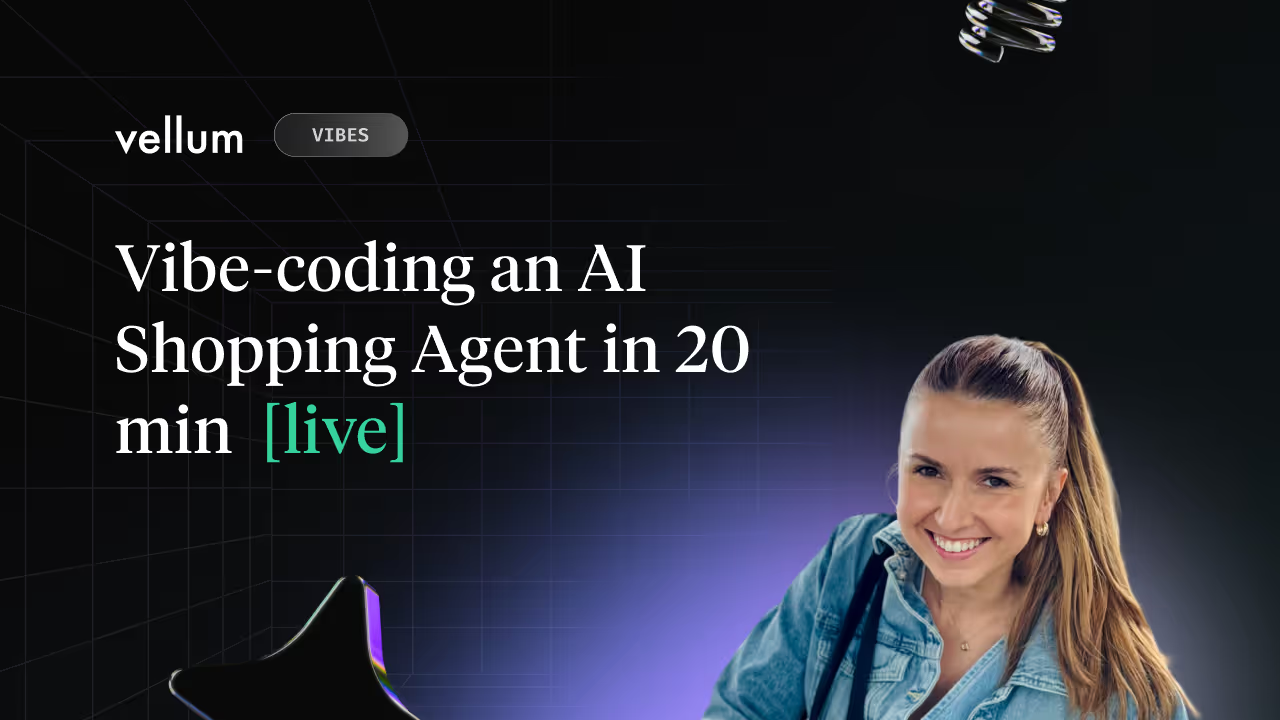


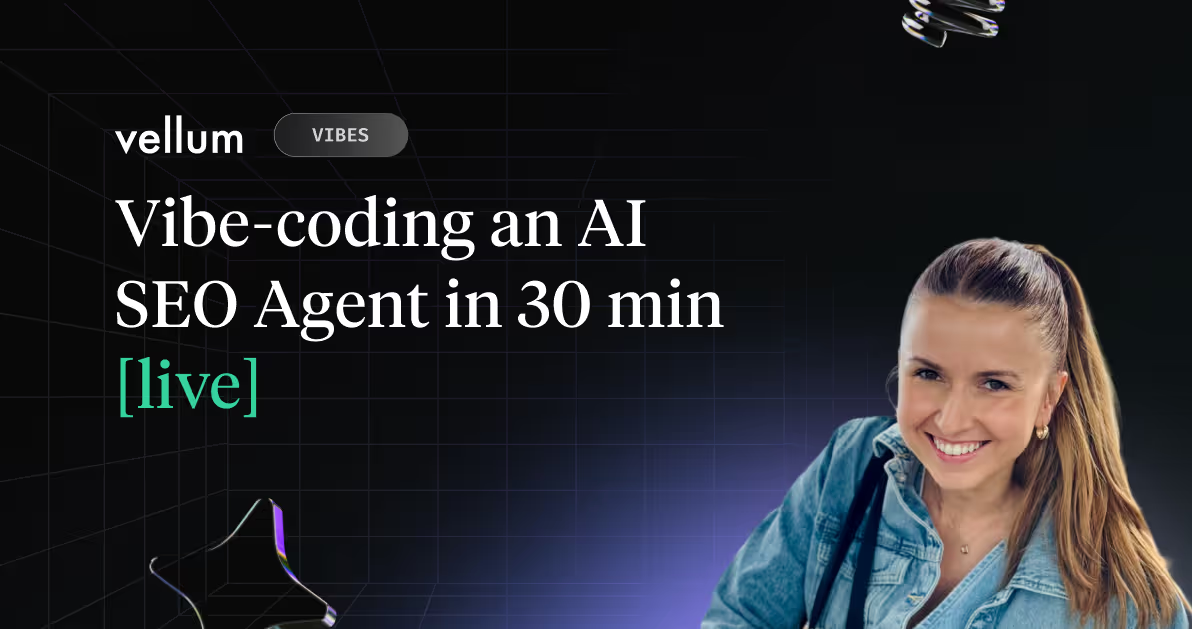
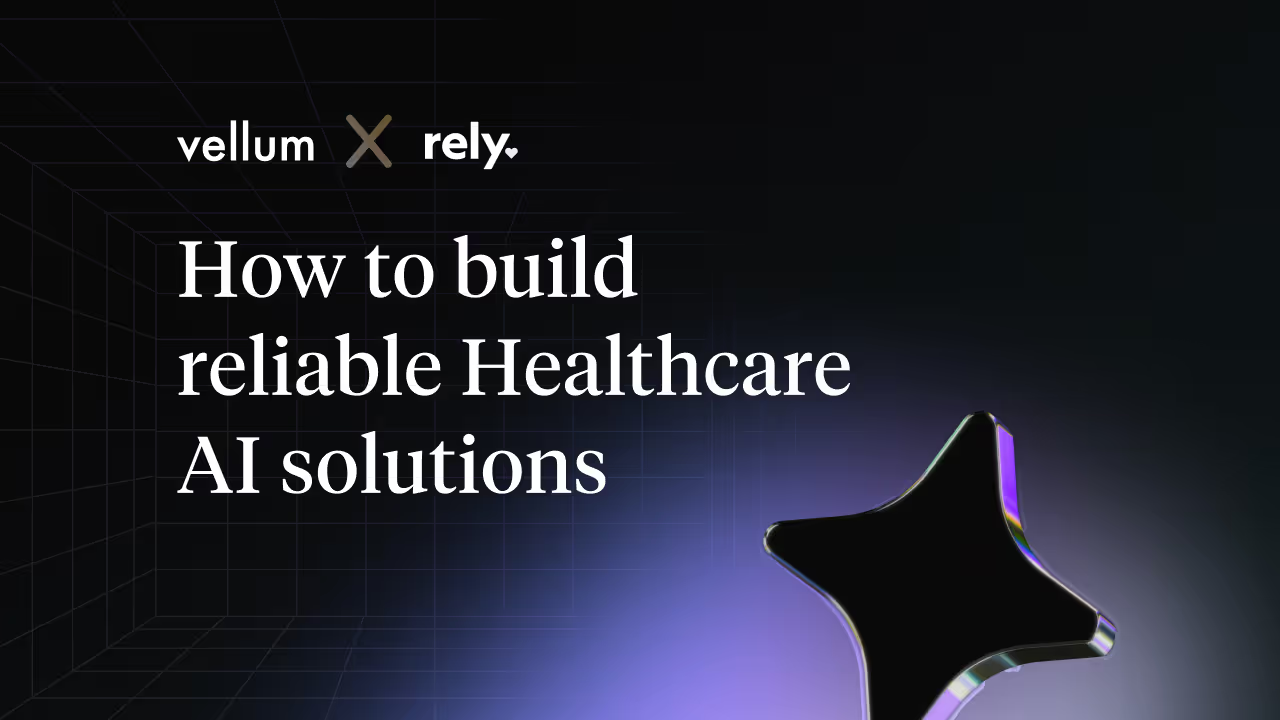
.avif)
